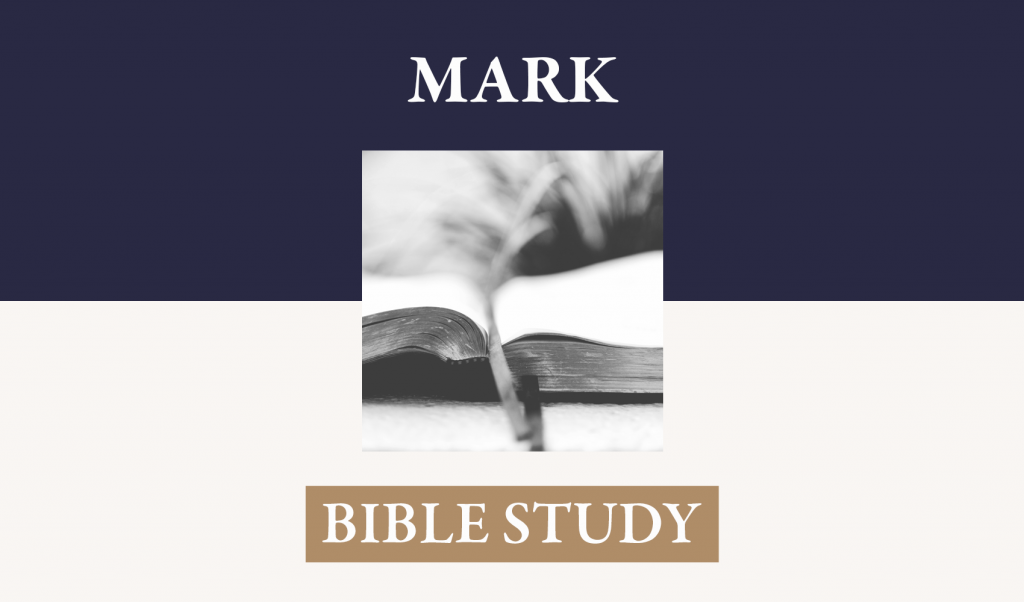This entire section contrasts the true sense of worship from false and hypocritical assertions of worship. Jesus is intent on preparing for a radical change in the perception of worship, the constitution of the people of God, and revealing himself as Messiah who has come to ransom a people before he establishes his kingdom of redeemed people.
I. True praise from false hearts – (11:1-11)
A. Jesus himself prompted this manifestation of messianic enthusiasm both from his disciples and the multitude in Jerusalem. It was a proclamation in accordance with the prophets of his true messianic status. Whereas, he had asked others to maintain their silence (e.g. 7:36), now he acts the true role and prompts from the people the cry of Psalm 118, “Save, O Lord, Blessed is he who comes in the name of the Lord.” They proclaimed that the throne of David was his, as has been indicated by the cries of the blind man immediately preceding this (10: 47, 48). That the kingdom indeed was his, he had to affirm, even though he would tell Pilate “My kingdom is not of this world,” (John 18:36) that is at the present moment; it is not of this age but will inaugurate a new age in a new world when redemption is both accomplished and applied in its fullest.
B. The shouts, therefore, were given in an excitement of earthly hope but in ignorance of the need for a true redemption from sin. When he did not immediately fulfill their temporal hopes, they turned on him and with all the exuberance with which they shouted, “Hosanna,” they shouted, “Crucify him.” His disciples, who did not consent to his crucifixion, nevertheless “forsook him and fled” (14:50) when he did not take action against those who had come to arrest him.
II. Israel’s fruit was only seasonal and therefore stood under a curse (12-14, 20-26).
A. Jesus used the fig tree as a symbol of the ritualistic but spiritually unperceptive worship of the nation at large. Even as praise had been given him when the prospects of personal advantage seemed prominent among the people, so a fig tree bears fruit only under the most advantageous conditions. Israel is like a fig tree whose fruit is only seasonal. Many had just shown great fervor about Christ as he seemed to symbolize their importance as a nation. As it becomes clear that his messiahship transcends their national interests, their fervor turned to resentment, to deceitful opposition, and to murder.
B. Unless we grasp the nature of the symbolic act, that true religion always bears fruit and always seeks God and recognizes one’s dependence on God approaching him by faith, we will be tempted to see Jesus’s act as rash and irrational.
C. Though some commentators say that Mark merely imported from elsewhere these sayings about prayer, if we grasp the central theme of the narrative, it is easy to understand why Jesus would say here ideas that he also had emphasized elsewhere. Even as the Temple was to be a house of prayer, so within the newly forming temple, true believers, prayer was to be the most consistent and pure form of ongoing worship of the believing heart. We believe that God can and will do all his holy will, even if it involves moving mountains from one place to another. We believe that we always stand in need of personal forgiveness and also live with a forgiving spirit. “Forgive us our trespasses as we forgive those who trespass against us.” The new covenant community will be marked by that spirit: “And be kind to one another, tenderhearted, forgiving one another, even as God in Christ forgave you” (Ephesians 4:32).
III. Jesus revealed the utter disregard for true worship on the part of the Jews. (15-19, 27-33)
A. After his celebrated entry into Jerusalem, Jesus went into the temple to observe what was happening (11). Obviously, he formulated a plan to uncover the irreverence of what was being allowed in the temple, activities that revealed the greed and utterly unspiritual mindset of the temple’s leadership.
B. Jesus took matters into his own hands and completely disrupted the commercial interests being carried forth, using the premises of the temple as a place of profit. According to Matthew, some children still picked up the refrain of Hosanna, a fact which greatly disturbed the chief priests and scribes.
C. Jesus again uncovered the lack of true understanding of worship. Instead of the place of prayer designed for all nations, they had made it a place for the manifestation of greed, corruption, and cheating (See Isaiah 56:7 and Jeremiah 7:11). Jesus himself was the temple (John 2:19-21) in whom we find the perfected worship of God and through whom we approach the Father. Our bodies have become a temple by the indwelling of the Holy Spirit (1 Corinthians 6:19). The church itself, consisting of reconciled people, is being constructed into a temple, the gathered people who worship in Spirit and in truth (Ephesians 2:19-22; John 4:21-24).
IV. Jesus overwhelms his opponents.
A. By what authority did Jesus do such things? (11:27-33) When the Jews challenged Jesus’ authority to take such a position of authority over the temple and its activities, Jesus positioned his answer on the condition of their response to a question of his. He knew they were unwilling to recognize the prophetic ministry of John the Baptist, so he linked the question about his authority to their perception of the authority of John the Baptist. Again, he revealed that complete lack of candor and their refusal to live according to truth. Their quest was only for unchallenged power and popular recognition as the most religious of all people.
B. Jesus presented his opponents as usurpers of the pure worship of Israel. (12:1-12) Their conniving duplicity brought from Jesus a story, a parable, of renters of a vineyard who sought to steal it by driving away or killing all those sent by the owner to lay claim to it. They even killed his son. Jesus then applied the parable to a messianic prophecy in Psalm 118 showing that the failure of the builders to recognize the true identity of the cornerstone of the temple was about them. They were the usurpers and the ones intent on killing the Son to make the religion focus on their priorities and not about his final work of redemption and reconciliation.
C. Jesus shows that they are not truly interested in knowing and worshipping God. (13-17) Through a question of paying taxes and the image printed on a coin, Jesus identified their unwillingness to give to God what is his. As the coin was pressed with the image of Caesar, so are all human beings made in the image of God. We belong to him, and he claims us as his own and brings us into his house of joy by means of a redeemer, his own beloved Son. They were unwilling to be claimed in such a way by such a one. They wanted to discredit him, not worship him.
D. Jesus shows that their knowledge of Scripture and the power of God is grossly perverted. (18-27) A challenge from the Sadducees, another powerful group in the Sanhedrin, concerned how levirate marriage related to relationships in the (supposed) resurrection [in which they did not believe]. Jesus laid bare, not only their hypocrisy, but their lack of insight into Scripture and their tacit denial of the power of God.
E. Jesus pointed to the mere purity of the law of God as the foundation of all true worship. (28-34).
- A scribe, apparently moved by true sincerity, asked Jesus about the greatest commandment. This was a matter of theological discussion among the scribes. He answered with no hesitation and with no attempt to challenge the sincerity or meaningfulness of the question.
- Jesus pointed to Deuteronomy 6:4, 5 and Leviticus 19:18. To this question he was glad to provide a straightforward answer, for it is the essential aspect of true religion and the purest statement of absolute morality and virtue in Scripture. It is a condensation of all the Law and the content of all righteousness and the principles that governed Jesus in his life as he moved toward the cross as an unblemished lamb to be a sacrifice for sinners. Jesus proclaimed, “There is no other commandment greater than these” (31).
- The scribe sincerely and enthusiastically commended the answer of Jesus, affirming it as the truth and as the enduring moral reality to which all the ceremonies and rituals pointed.
- Jesus, seeking to show the way through all the subterfuges and irrelevancies and hypocritical posturing of the other Jewish leaders, commended this scribe as “not far from the kingdom of God.”
F. Jesus pointed to the complexity of the person of Christ. (35-37). Jesus, using the Psalms as David addressed the Messiah as Lord (Psalm 110:1), and the promise of God that David’s Son would have an eternal throne (2 Samuel 7:12, 13), asked how these two things could be reconciled. None could answer the question, but before them stood the answer—Jesus himself as David’s son and David’s Lord. The mystery of the incarnation—the eternal Son of God taking human nature in the womb of Mary (Luke 1:35)—spoke of himself as the one in whom all true worship must be consummated.
G. Jesus warned against the Scribes because of their hypocrisy and greed (38-40). Jesus warned his disciples against the mere show of religion, words and flamboyant actions that seem to identify professional religionists as the most to be revered. They were the dried up fig tree, the overturned money-tables, the murderous usurpers of the vineyard, and the conniving lovers-of self rather than lovers-of-truth. They would not give themselves to God, they did not know how to recognize the Christ, and they omitted the central moral purpose of the law in favor of the passing ceremonies.
V. Jesus observed an instance of pure worship.
A. Jesus positioned himself to see how offerings were brought. If we were to position ourselves strategically in order to observe how people gave to the treasury, we could justly be accused of judgmentalism and invasion of privacy. Jesus, however, already knew what was in the heart, the entire system of temple worship pointed to him and his once-for-all sacrifice, he knew that the entire temple worship was soon to be rendered obsolete (Hebrews 8:13).
B. He observed the rich and the poverty-stricken widow. As in previous encounters and observations, Jesus looked for the elements of the coming new covenant. He showed the difference between the heartless ritual of the ostentatious, and the true heart-felt submissiveness of a seemingly insignificant woman. The latter is of eternal value; the former will be burned up like chaff. The widow exemplified the level of worship described by the writer of Hebrews, “Let us draw near with a true heart in full assurance of faith, having our hearts sprinkled from an evil conscience and our bodies washed with pure water” (Hebrews 10:22). The conscience is cleansed by the blood of Christ and the whole person is sanctified by the cleansing action of the Spirit through the word of God (“that he might sanctify and cleanse her with the washing of water by the word” (Ephesians 5:26]).
C. He pointed to the sacrificial and spiritual character of true worship.
- Early in his ministry, Jesus had talked to an outcast woman of Samaria. In this conversation, he had revealed her sin, not only as a matter of fact, but as an issue of conscience leading to repentance and true knowledge of Jesus as Messiah (John 4:29, 42). Also, he had showed her that true worship was no longer a matter of the right place, with the right accoutrements, but was a matter of a changed heart, a regenerated mind and soul, and the conscientious love of truth (John 4:21-24).
- Now he points to a simple act of loving sacrifice on the part of an unnamed woman as an example of true worship. In contrast to those who gave that of which they had no need, she gave her very life’s sustenance. They did not know what it meant to render to God what is God’s. With her two mites, the widow gave herself.




















